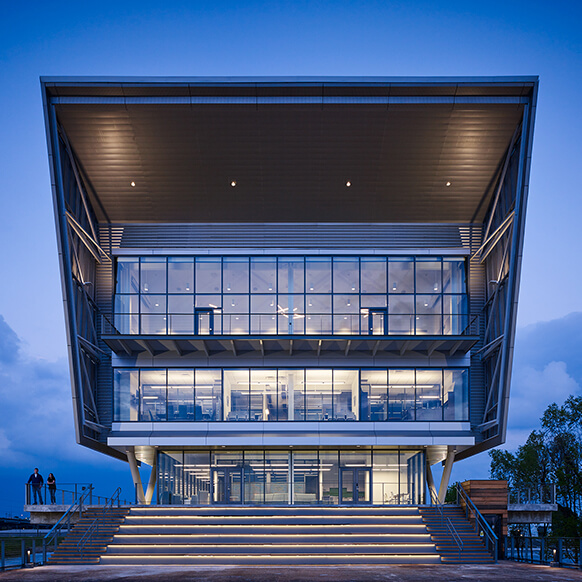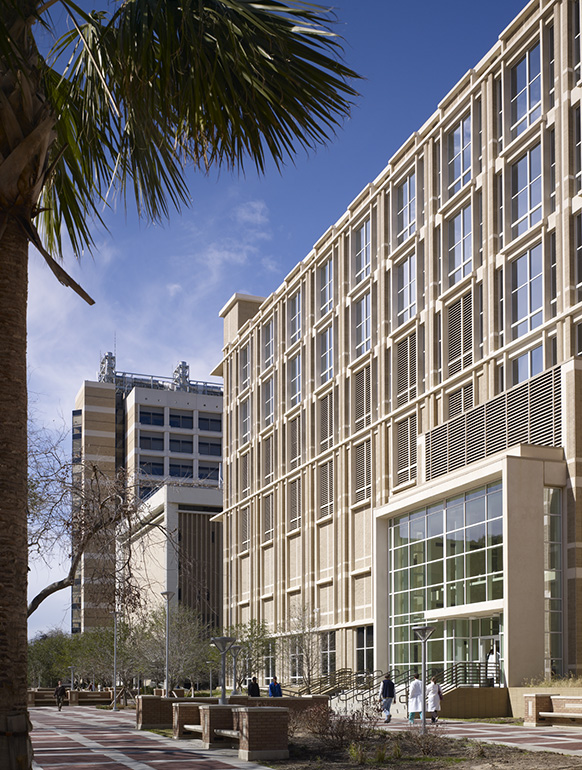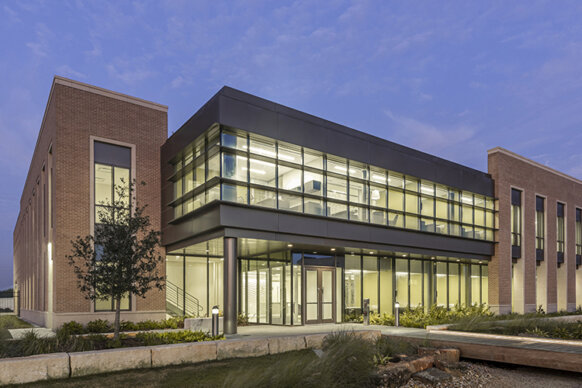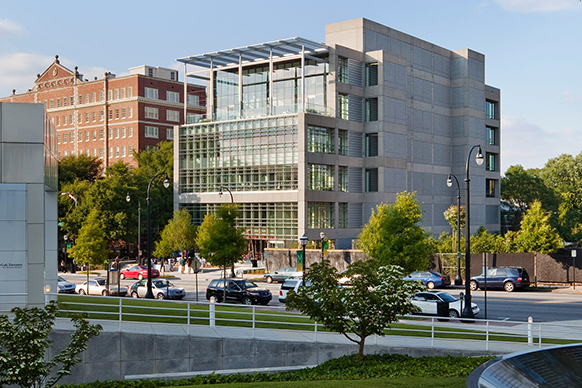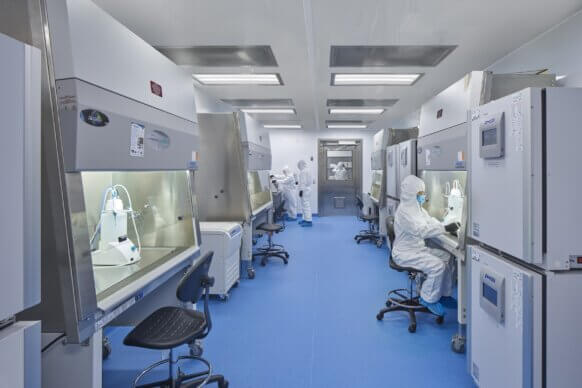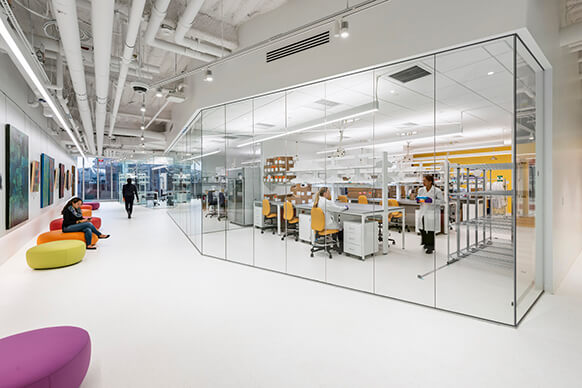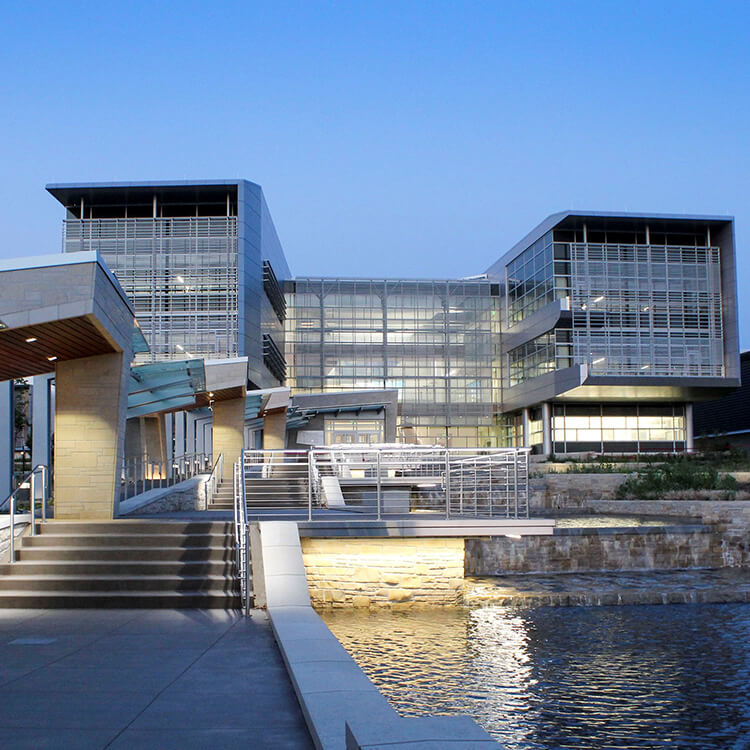
National Bio and Agro-Defense Facility
The United States needs to be on the front line of livestock animal health research to defend against foreign animal, emerging, and zoonotic diseases. The National Bio and Agro-Defense Facility (NBAF) is envisioned as a state-of-the-art biosafety facility that will enable the U.S. to conduct research, develop vaccines and anti-virals, and provide enhanced diagnostic capabilities to protect our country from emerging diseases.
This high-containment research facility contains BSL-2, ACL-2, BSL-3, ACL-3, BSL-3Ag, and BSL-4 laboratories. Replacing an aging facility toward the end of its lifecycle, the new campus will replace and expand on the mission of the Plum Island Animal Disease Center (PIADC) with enhanced, integrated abilities to meet national mandates and requirements of the Department of Homeland Security (DHS) and the United States Department of Agriculture (USDA).
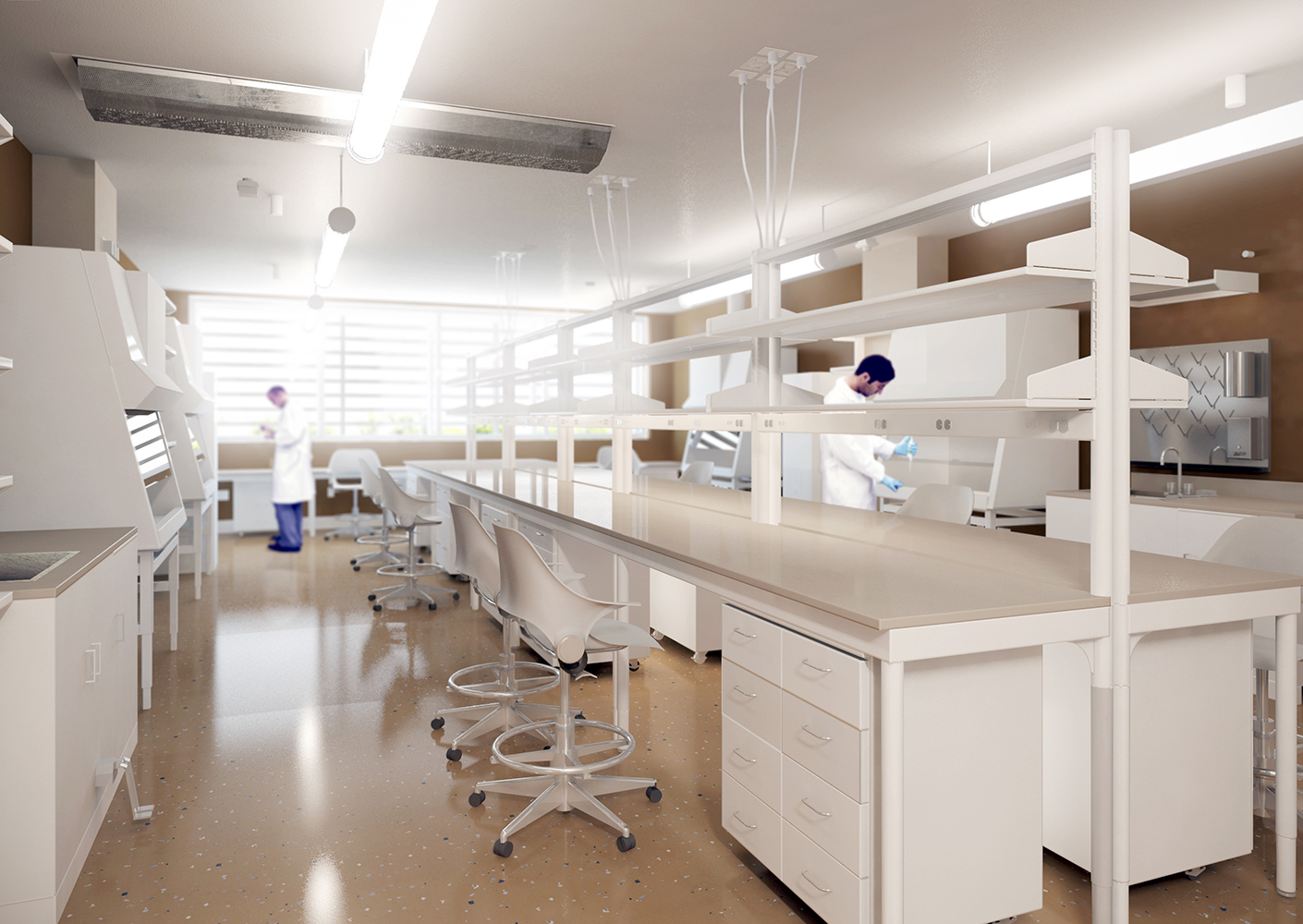
NBAF will allow researchers to study foreign animal, and emerging diseases in a state-of-the-art facility designed with the highest standards of biosafety and biosecurity.

NBAF is designed to maintain static containment in the event of a 230 mph storm. Borrowing from standards utilized in the nuclear industry, the NBAF was designed to withstand a direct hit from a tornado while still maintaining a sealed, contained environment within the laboratory and animal spaces. Despite this, we were still able to devise a means to provide daylight and views to the occupants of the labs.
Under Secretary Dr. Reginald Brothers, Department of Homeland Security, Science and Technology Directorate
The NBAF Design Partnership (NDP) was the architect and engineer on the project. NBAF Design Partnership, a joint venture of Perkins&Will, Flad & Associates Architects, Merrick & Company, Affiliated Engineering Inc., and WSP (formerly CCRD Partners).









